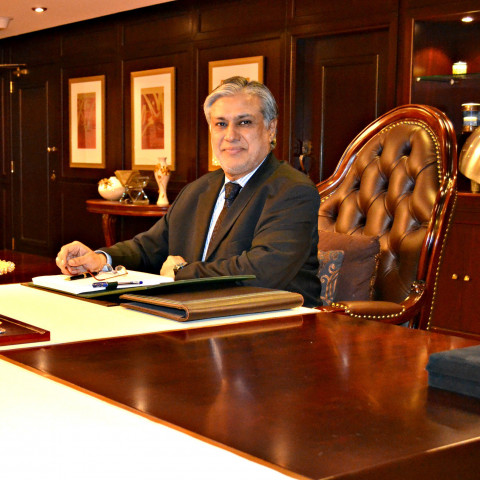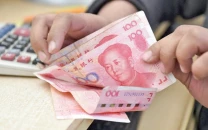Govt will not loosen its purse, as long as I am here: Dar
Finance minister says there will be no spending spree before next year’s elections

Pakistan's public sector development programme spending has more than doubled to Rs1.67 trillion ($15.9 billion) in five years, according to budget documents cited by Bloomberg. PHOTO: FILE
In conversation with Bloomberg News, he said, “We are not going to be loosening the purse, at least as long as I am here,”
“The policy intention of the government is to not lose the gains which we have made so far,” Dar added.
Pakistan emerged from the edge of a debt crisis in 2013, staved off when the then newly elected government of Prime Minister Nawaz Sharif signed the $6.6 billion IMF loan programme, which ended in September.
Forget India, profit from ‘quiet rise’ of Pakistan: Barron’s Asia
Some analysts, according to the Bloomberg report, have voiced concern that, released from the IMF's shackles, Pakistan's spending will surge as the country heads toward polls in 2018, which it said PM Sharif is widely expected to contest.
Pakistan's public sector development programme spending has more than doubled to Rs1.67 trillion ($15.9 billion) in five years, according to budget documents cited by Bloomberg.
In a document provided to Bloomberg, the finance ministry said it would maintain medium-term spending on social and “pro-poor sectors” while reducing the fiscal deficit to 3.8% of the gross domestic product this year, from 4.6% in the previous year.
Govt to float $750m Eurobond in next fiscal year
The government also plans to tap either the international Eurobond or sukuk market toward the end of the fiscal year through June, Dar said. Pakistan issued $1 billion of five-year Islamic-compliant debt in October at 5.5%, despite violence on its disputed border with India casting a shadow over the sale.
“Generally we ask for $500 million, but it depends on what we get offers for,” Dar was quoted as saying. “Pakistan has established good ground and now has a great appetite from the foreign investors.”
Amid Pakistan's economic stabilisation and a surge of investment and loans from China valued at around $55 billion, PM Sharif's government is seeking a growth rate of 7% by 2018, from a current 5.7% target for this fiscal year, the report said.
British firm to pour $400m in Pakistan for cement plant
Even so, Dar said the size of Pakistan's economy may be understated by about 20 to 25% as the base year used by the statistics agency is over a decade old.
Dar has asked the Pakistan Bureau of Statistics and World Bank to start work on rebasing the GDP data, which will take nearly a year. He expects it may boost the annual growth rate by about 1 percentage point.
Some doubts have arisen over the sustainability of Pakistan's economic growth due to a decline in exports last year to their lowest level since 2010, according to Bloomberg. While the government is seeking to end power outages that have hindered industries, the rupee's strength has also been blamed for its inability to compete within the region.
Pakistan’s GDP growth expected at 4.9%: Moody’s
The rupee has remained stable at an average of 104.7 per dollar in the past year, barely moving out of a range of 1 rupee plus or minus. The IMF said last year the currency was probably overvalued by as much as 20%. Dar said the currency wasn't overvalued or pegged against the dollar.
“The forex market is independent,” he said, further adding, “I think it is the confidence of the investors, the market players and the true strength of the currency itself that it is not declining. So I can't force it.”
Gwadar land prices skyrocket due to Chinese investment
Dar said that inflation shouldn't go “haywire” and he expected it around 5% this fiscal year and possibly the next. While maintaining that the State Bank of Pakistan (SBP) was independent, he said that he didn't expect a rate hike in the near term.
SBP has kept the target policy rate unchanged at 5.75% in the past four meetings, after a surprise 25 basis point cut last May.
“There are no clear indications of CPI going up,” said Dar, “I don't see any major reason why there should be a major increase in the policy rate this fiscal year.”



















COMMENTS
Comments are moderated and generally will be posted if they are on-topic and not abusive.
For more information, please see our Comments FAQ